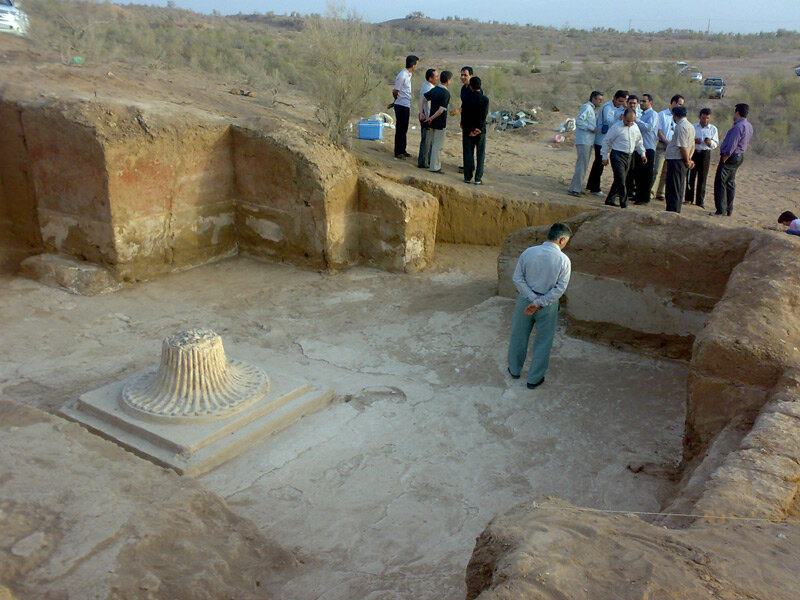Archaeological survey sheds new light on Sassanid architecture

TEHRAN – A team of Iranian archaeologists has recently finished an archaeological season on the Sassanid-era (224–651) Vigol fire temple in the city of Aran-Bidgol in central Isfahan province.
As a part of the second season of excavation at the fire temple, one of the largest ancient sites in Isfahan province, important data on the religious architecture of the Sassanid era as well as several inscriptions were discovered, said Iranian archaeologist Mohsen Javari on Tuesday.
Pottery pieces are the most significant archeological findings of this area, he added.
According to studies conducted so far, this area was inhabited during the Sassanid period until the end of the Seljuk era (1037–1194), he mentioned.
Experts say the architectural form of fire temples turned into the most typical form of Sassanid religious architecture, relating closely to the expansion and stabilization of Zoroastrianism under the Sassanid reign and continuing during the Islamic era thanks to its usage in religious and holy buildings such as mosques and tombs.
The Sassanid era (224 CE–651) is of very high importance in the history of Iran. Under Sassanids, Persian art and architecture experienced a general renaissance. Architecture often took grandiose proportions, such as palaces at Ctesiphon, Firuzabad, and Sarvestan, which are amongst the highlights of the ensemble.
Crafts such as metalwork and gem engraving grew highly sophisticated, yet scholarship was encouraged by the state. In those years, works from both the East and West were translated into Pahlavi, the language of the Sassanians.
Rock-carved sculptures and bas-reliefs on abrupt limestone cliffs are widely deemed as characteristics and striking relics of Sassanian art, top examples of which can be traced at Bishapur, Naqsh-e Rostam and Naqsh-e Rajab in southern Iran.
In 2018, UNESCO added an ensemble of Sassanian historical cities in southern Iran — titled “Sassanid Archaeological Landscape of Fars Region”-- to its World Heritage list. The ensemble comprises eight archaeological sites situated in three geographical parts of Firuzabad, Bishapur, and Sarvestan. It reflects the optimized utilization of natural topography and bears witness to the influence of Achaemenid and Parthian cultural traditions and Roman art, which later had a significant impact on the architecture and artistic styles of the Islamic era.
The Sassanid archaeological landscape also represents a highly efficient system of land use and strategic utilization of natural topography in the creation of the earliest cultural centers of the Sassanid civilization.
Aran-Bidgol is the gateway to the Maranjab desert and caravansary, which also draws thousands of domestic travelers each year. The desert, which is a top destination for off-roaders, leads to salt lake from the north, Band-e Rig and Desert National Park from the east, Masileh Desert, Hoz-e sultan, and Moreh Lakes from the west, and eventually Aran and Bidgol from the south.
Situated in Isfahan province, the town is surrounded by desert from the north and east, and thus it has a typical climate of hot and dry in summer, cold and dry in winter, and very little rainfall during the year.
ABU/AM
Leave a Comment